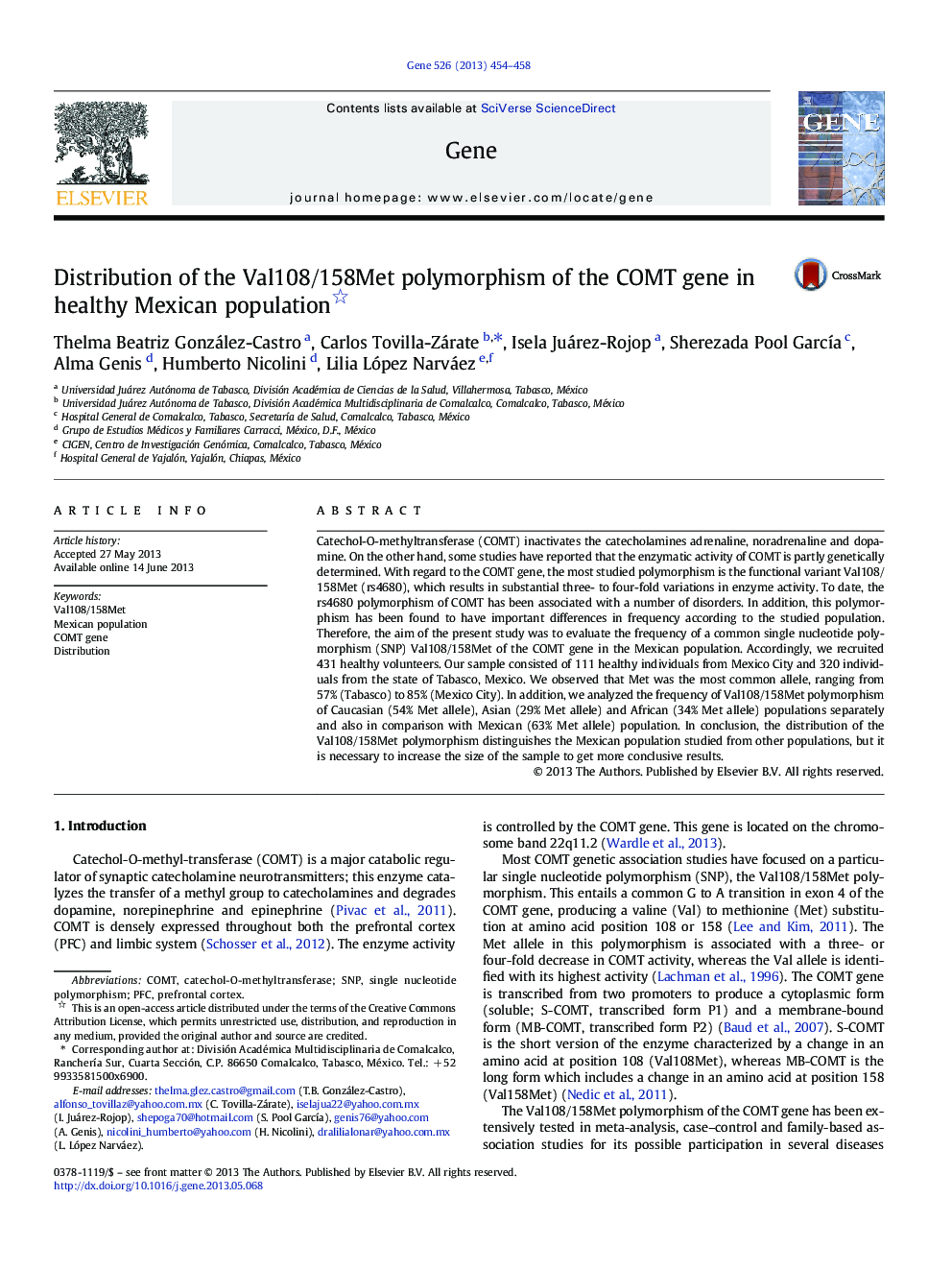| کد مقاله | کد نشریه | سال انتشار | مقاله انگلیسی | نسخه تمام متن |
|---|---|---|---|---|
| 5906440 | 1159970 | 2013 | 5 صفحه PDF | دانلود رایگان |

- The COMT gene has been analyzed in several studies without reaching conclusive results.
- Based on the existing evidence, the COMT gene probably varies according to the populations.
- We studied the distribution of the genotypes and alleles of the COMT gene in the Mexican population.
- The distribution of the COMT gene is important for the understanding of its genetic role.
Catechol-O-methyltransferase (COMT) inactivates the catecholamines adrenaline, noradrenaline and dopamine. On the other hand, some studies have reported that the enzymatic activity of COMT is partly genetically determined. With regard to the COMT gene, the most studied polymorphism is the functional variant Val108/158Met (rs4680), which results in substantial three- to four-fold variations in enzyme activity. To date, the rs4680 polymorphism of COMT has been associated with a number of disorders. In addition, this polymorphism has been found to have important differences in frequency according to the studied population. Therefore, the aim of the present study was to evaluate the frequency of a common single nucleotide polymorphism (SNP) Val108/158Met of the COMT gene in the Mexican population. Accordingly, we recruited 431 healthy volunteers. Our sample consisted of 111 healthy individuals from Mexico City and 320 individuals from the state of Tabasco, Mexico. We observed that Met was the most common allele, ranging from 57% (Tabasco) to 85% (Mexico City). In addition, we analyzed the frequency of Val108/158Met polymorphism of Caucasian (54% Met allele), Asian (29% Met allele) and African (34% Met allele) populations separately and also in comparison with Mexican (63% Met allele) population. In conclusion, the distribution of the Val108/158Met polymorphism distinguishes the Mexican population studied from other populations, but it is necessary to increase the size of the sample to get more conclusive results.
Journal: Gene - Volume 526, Issue 2, 10 September 2013, Pages 454-458